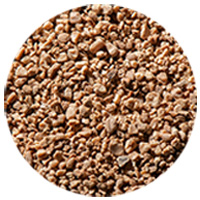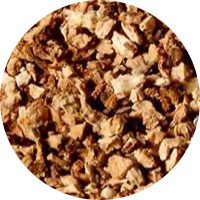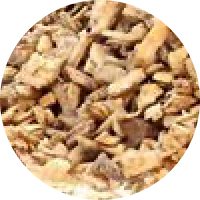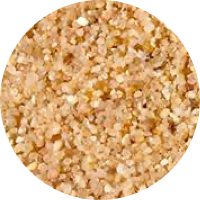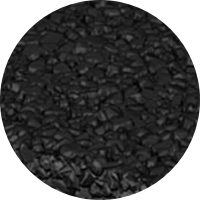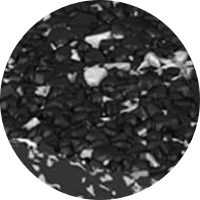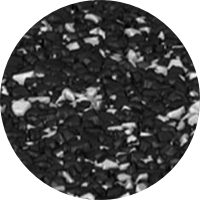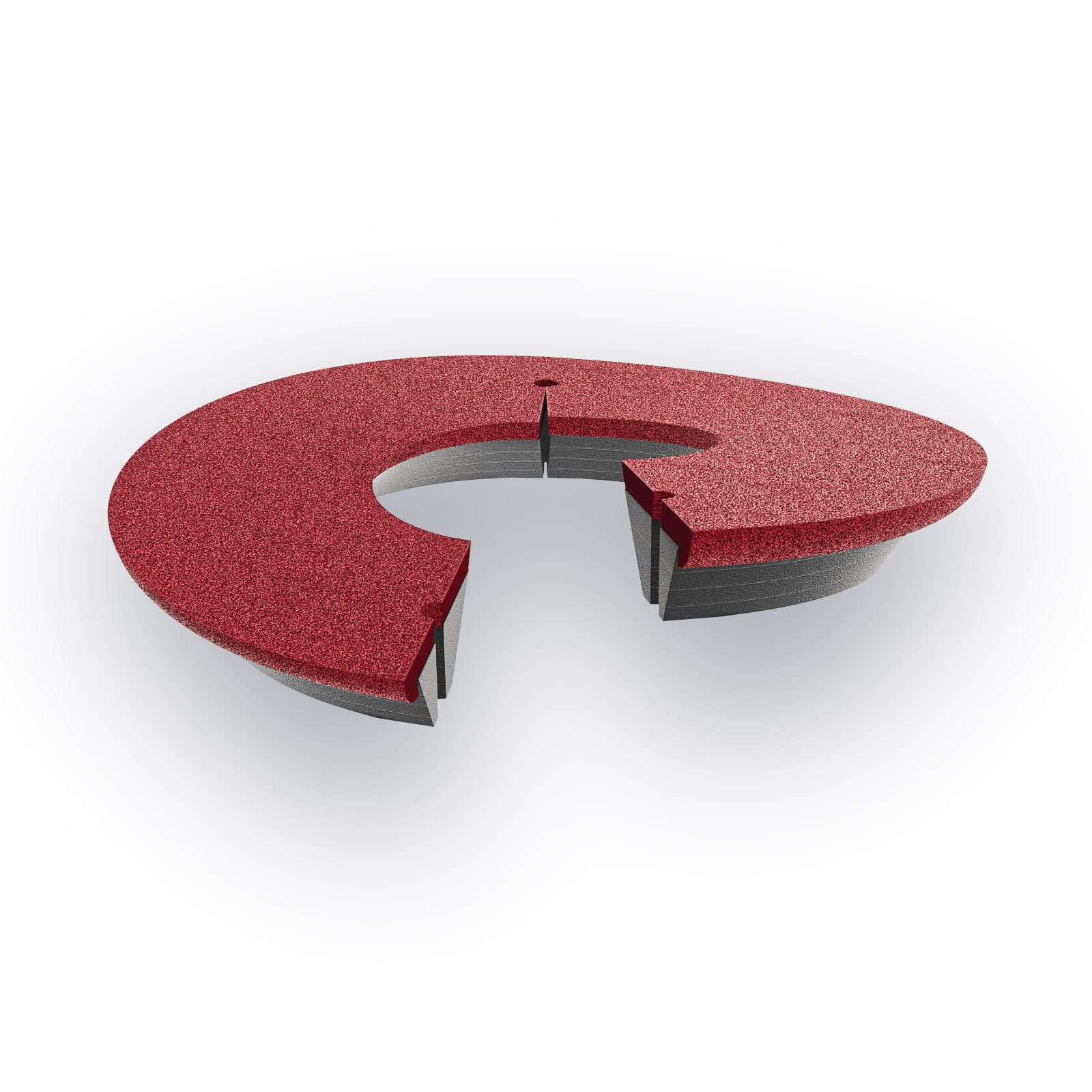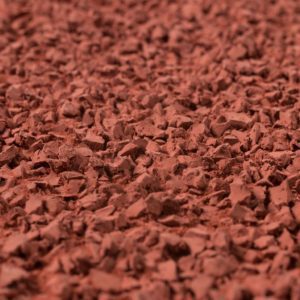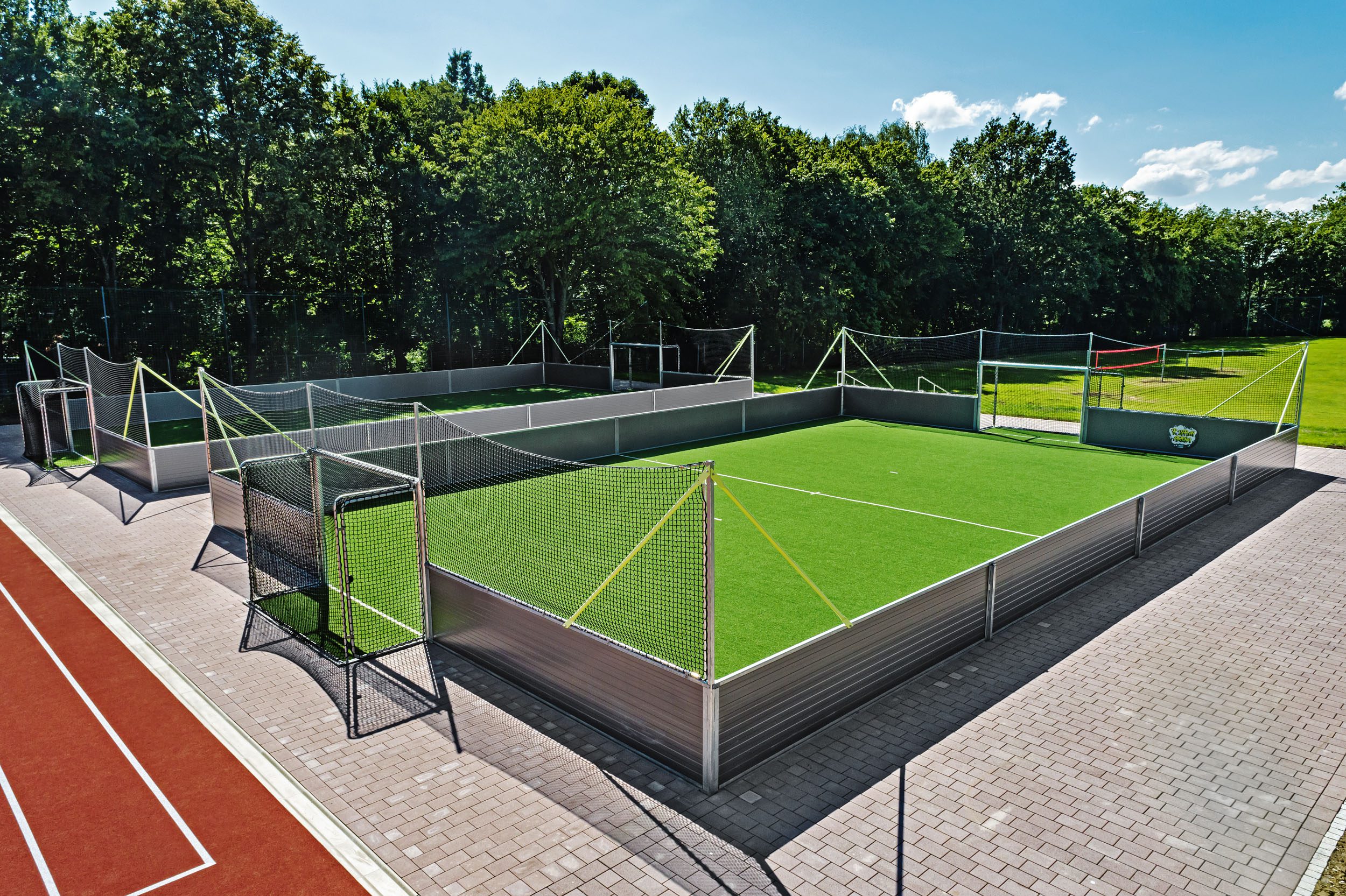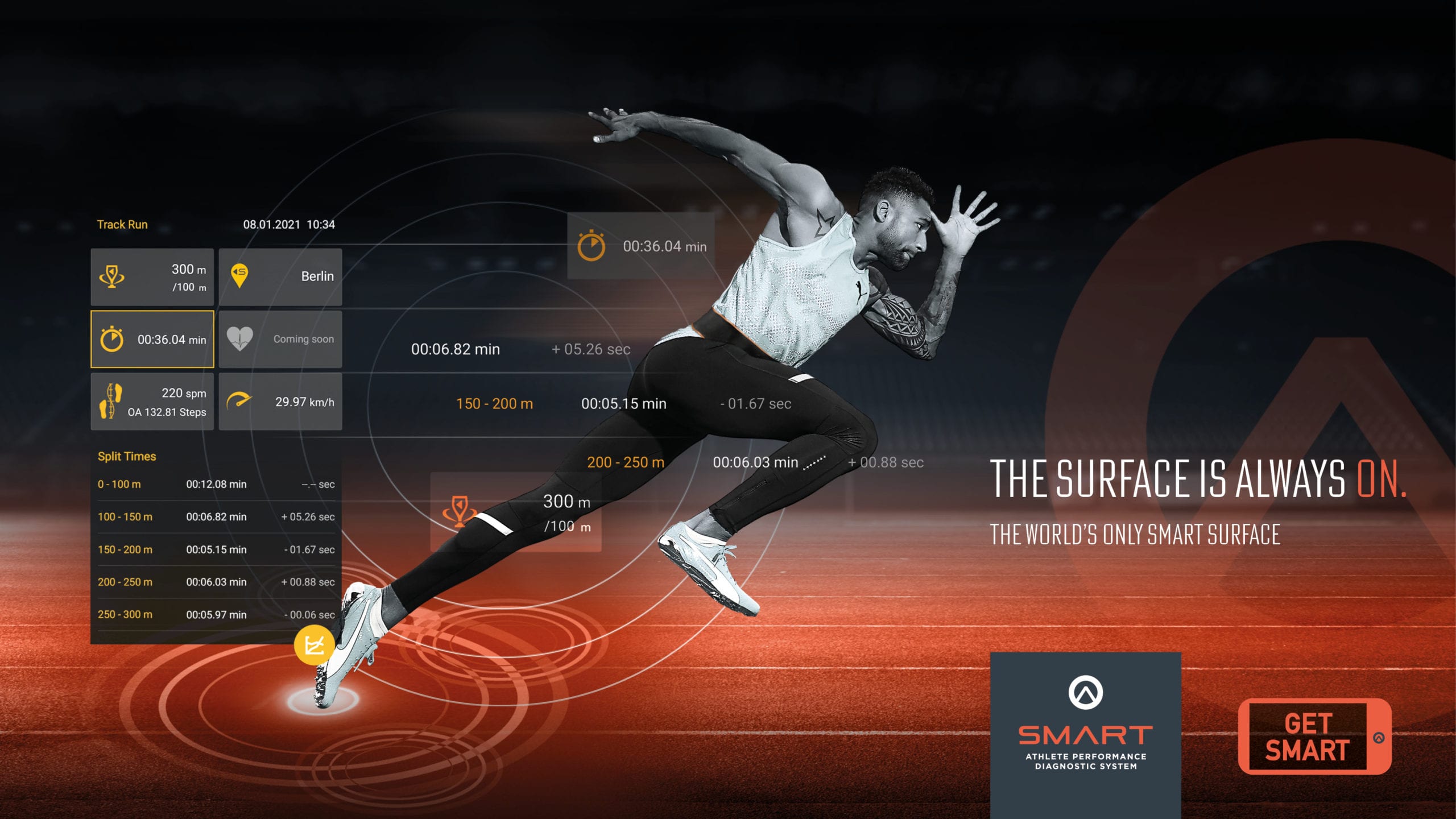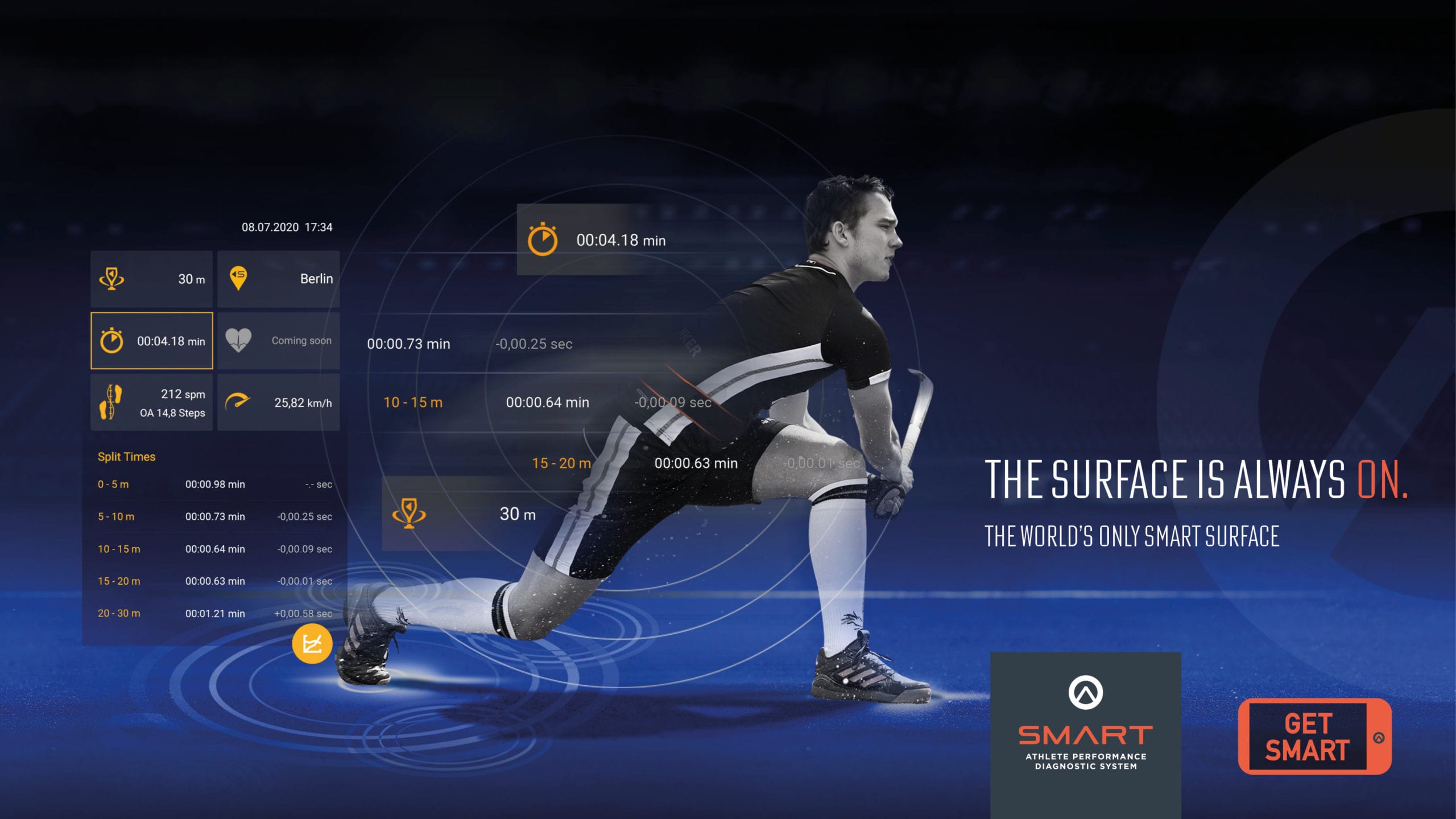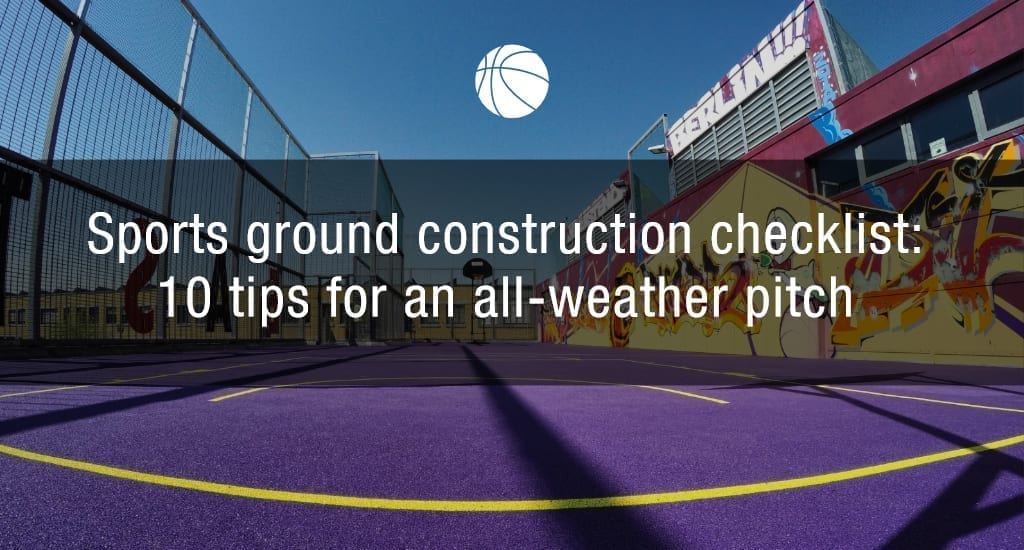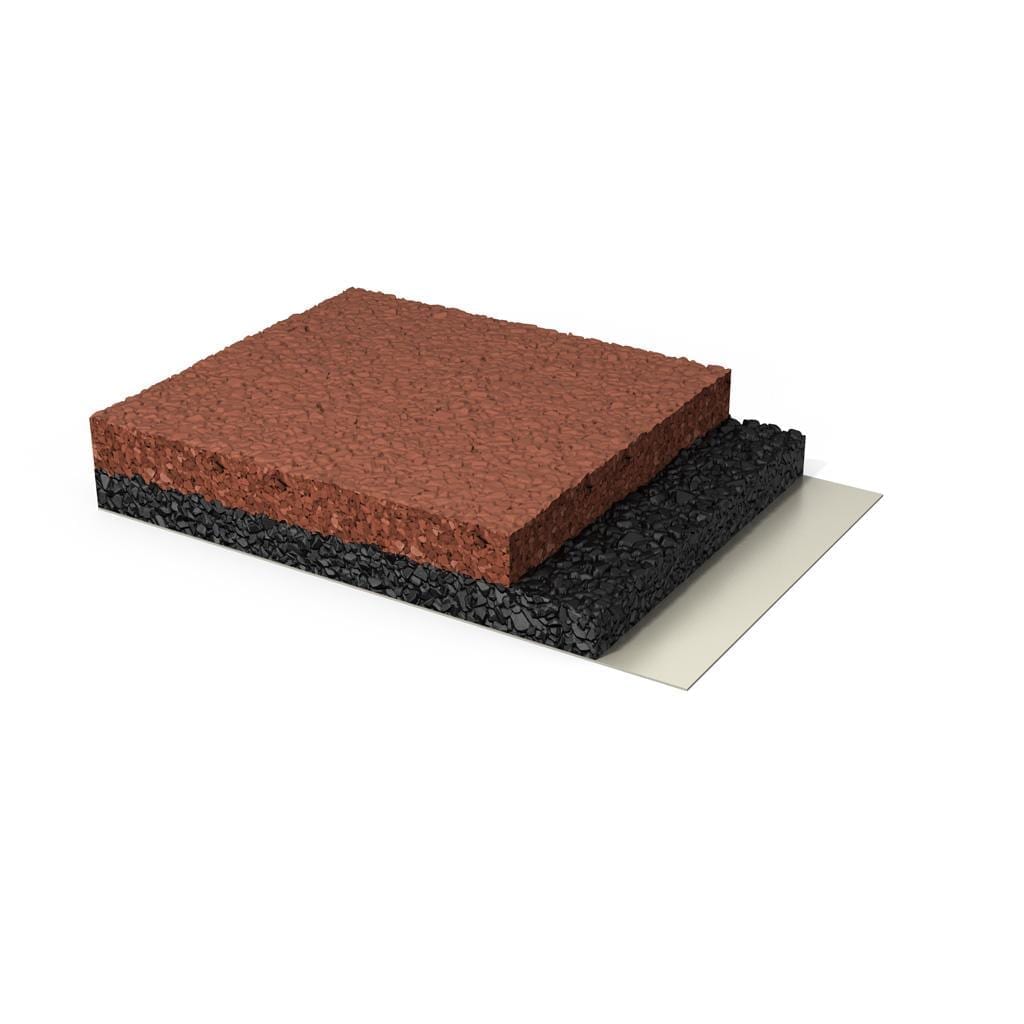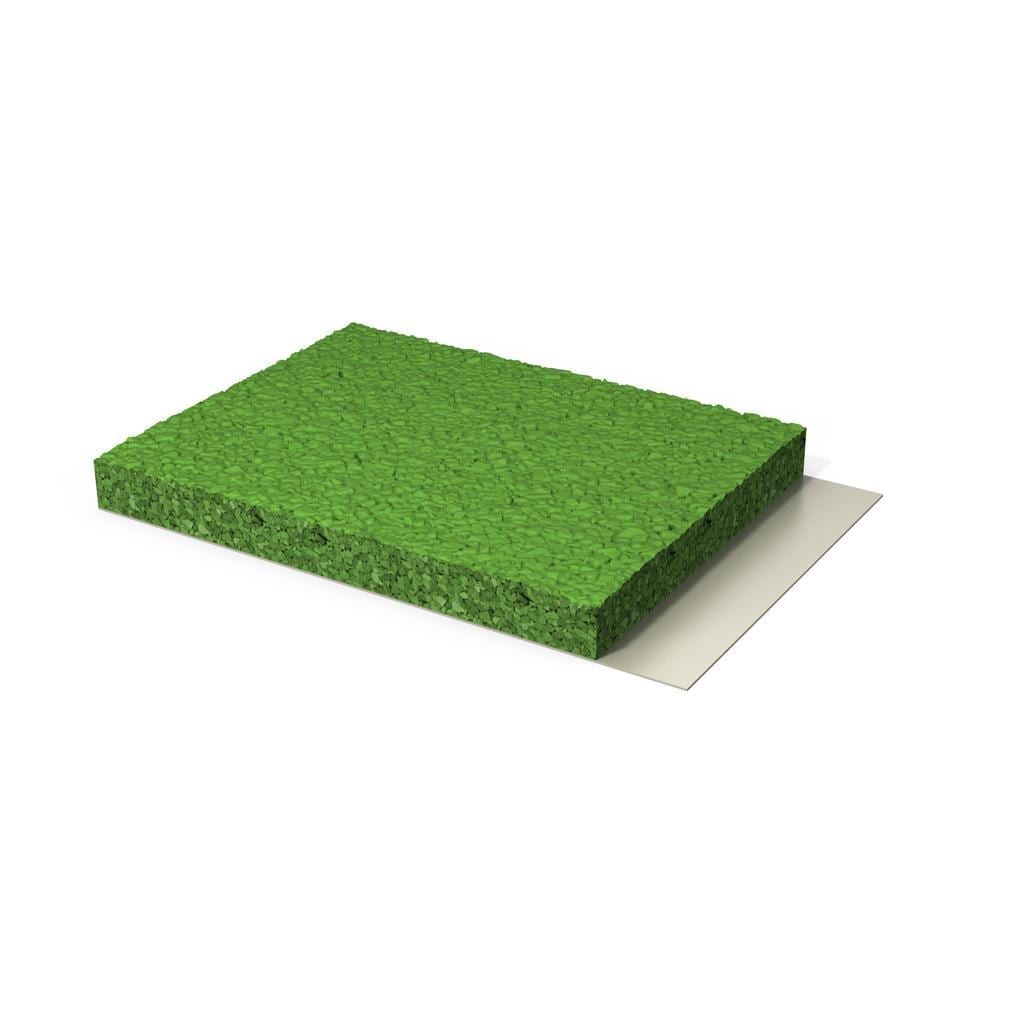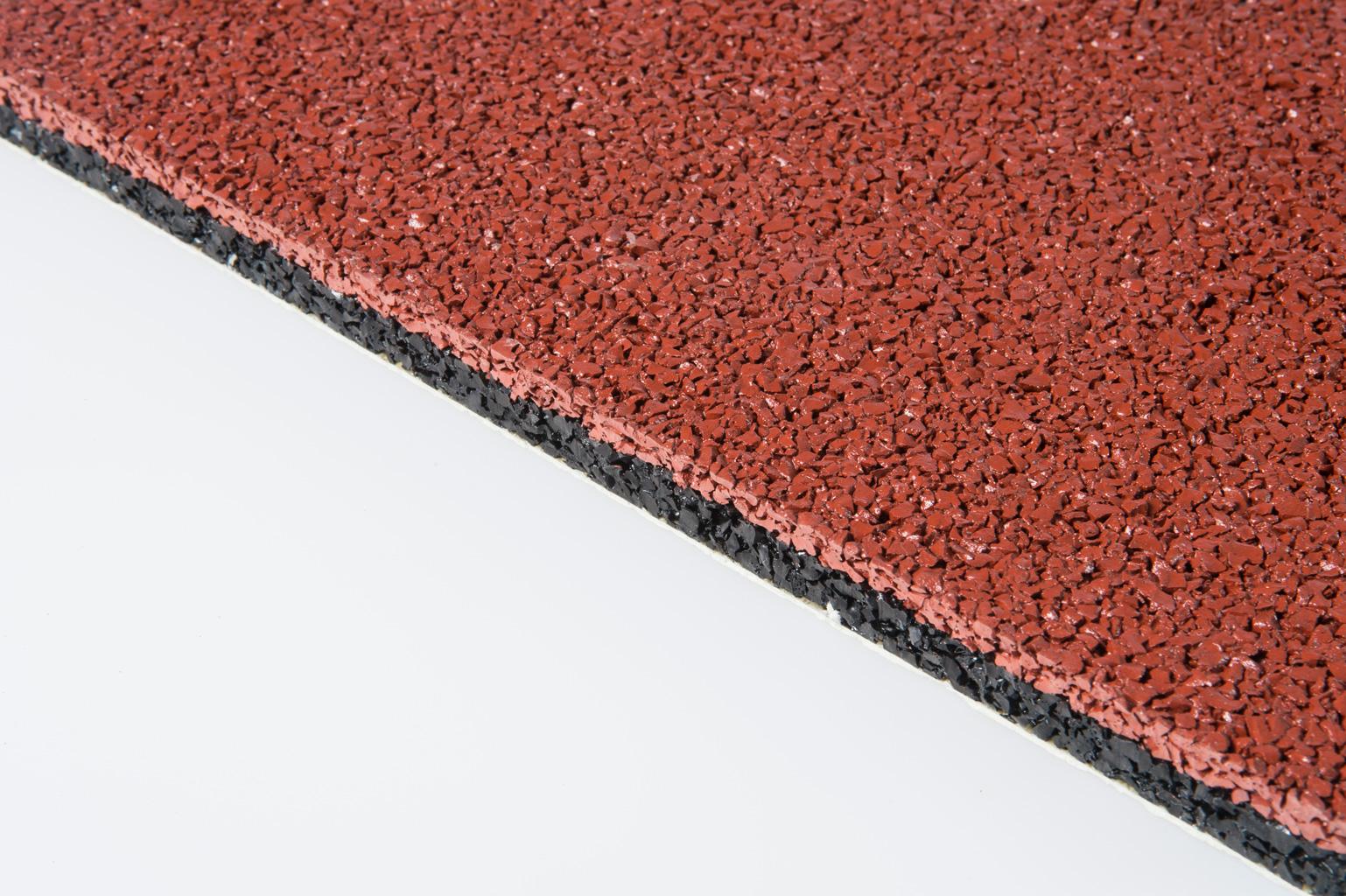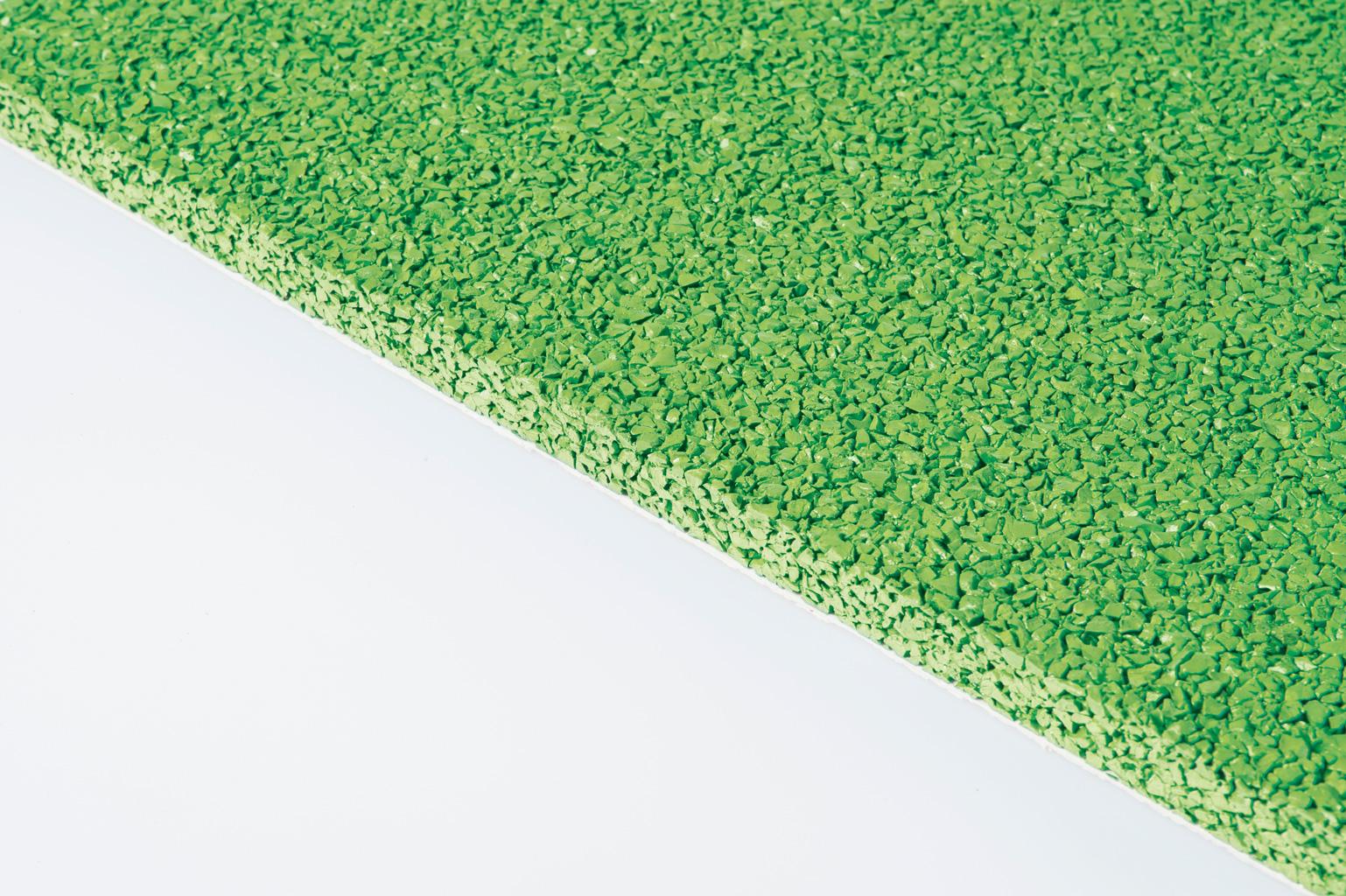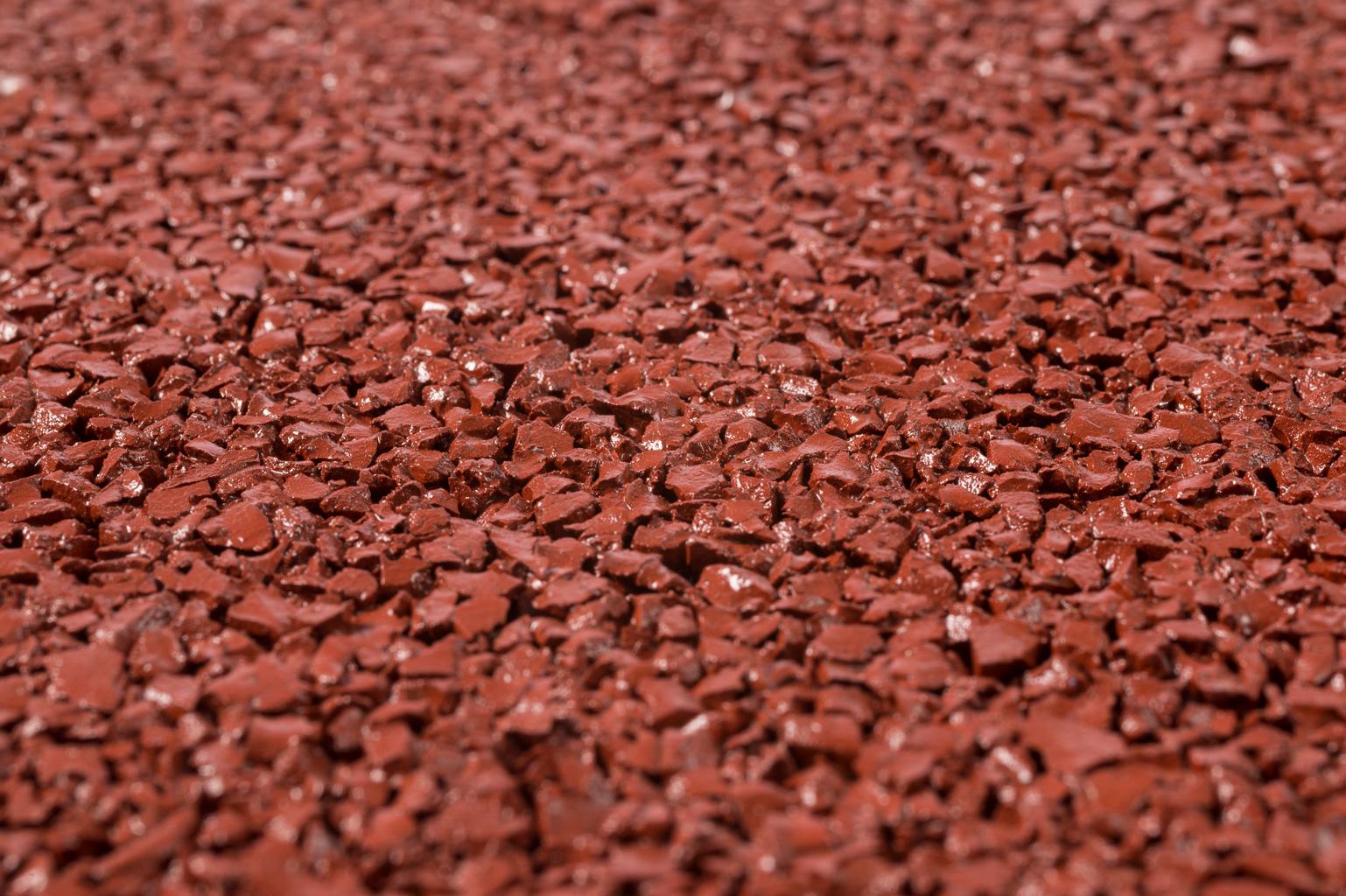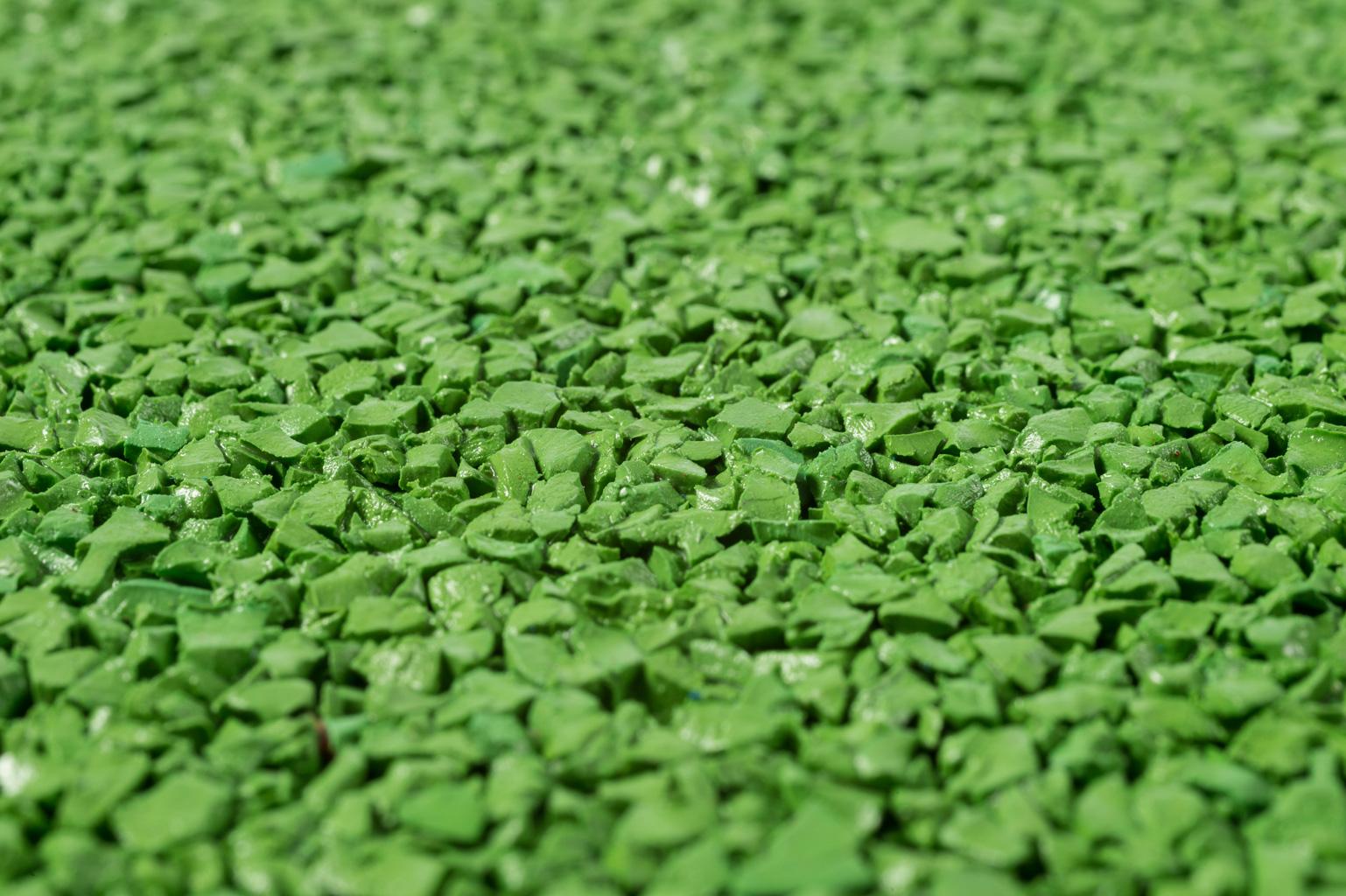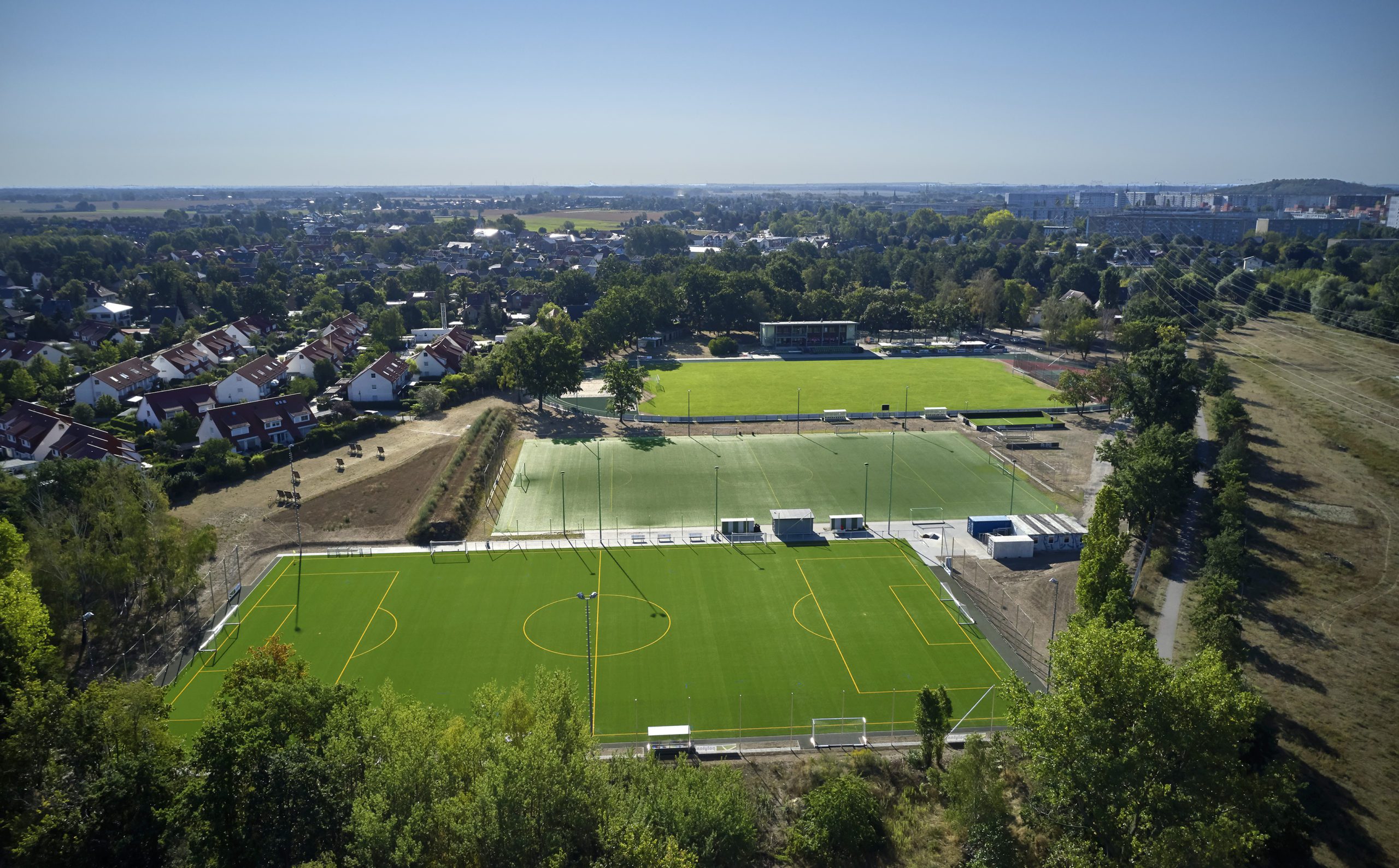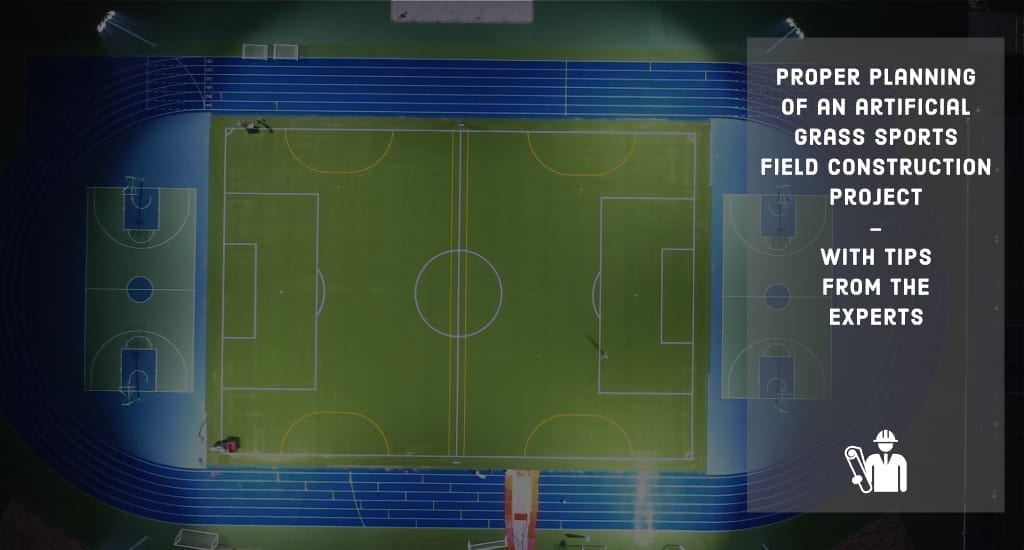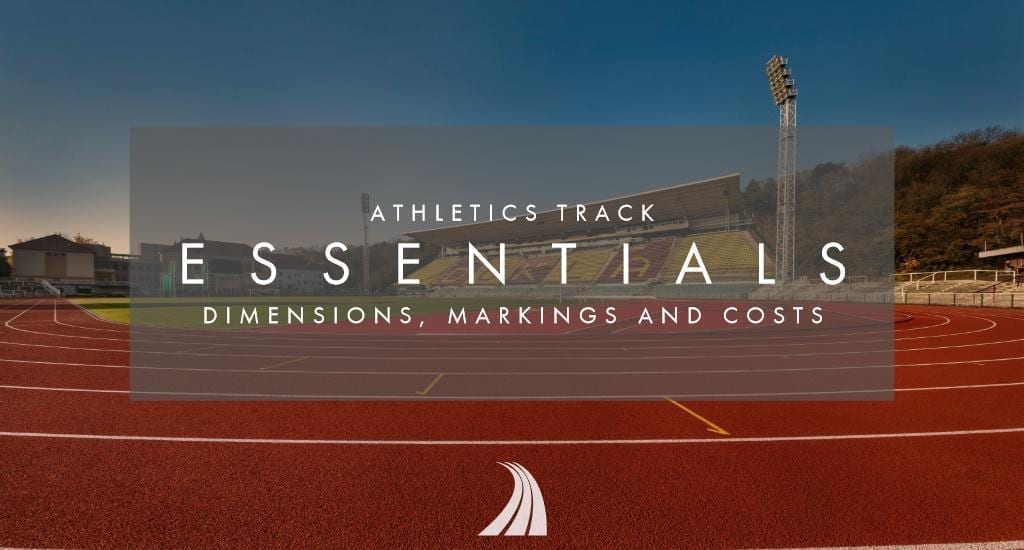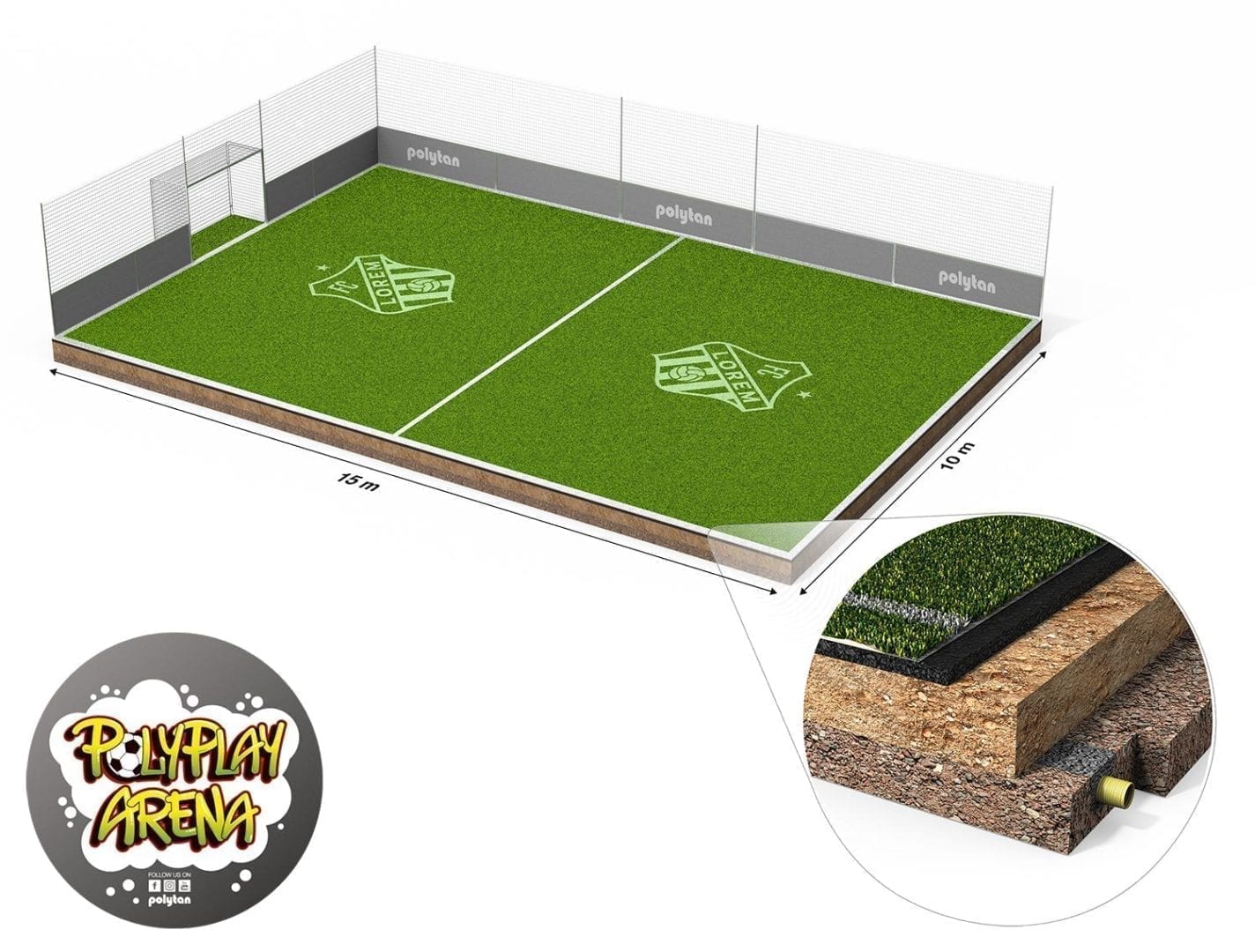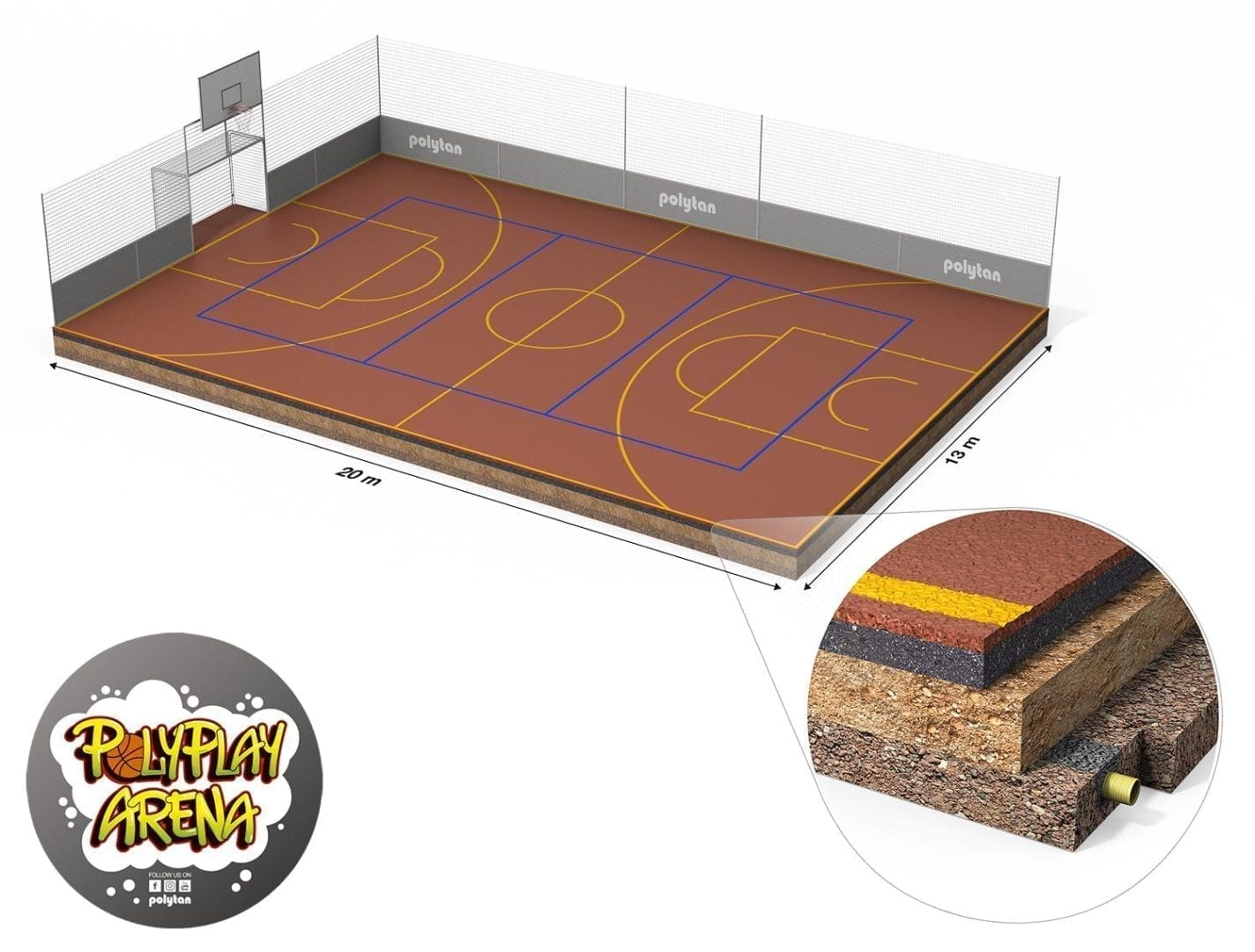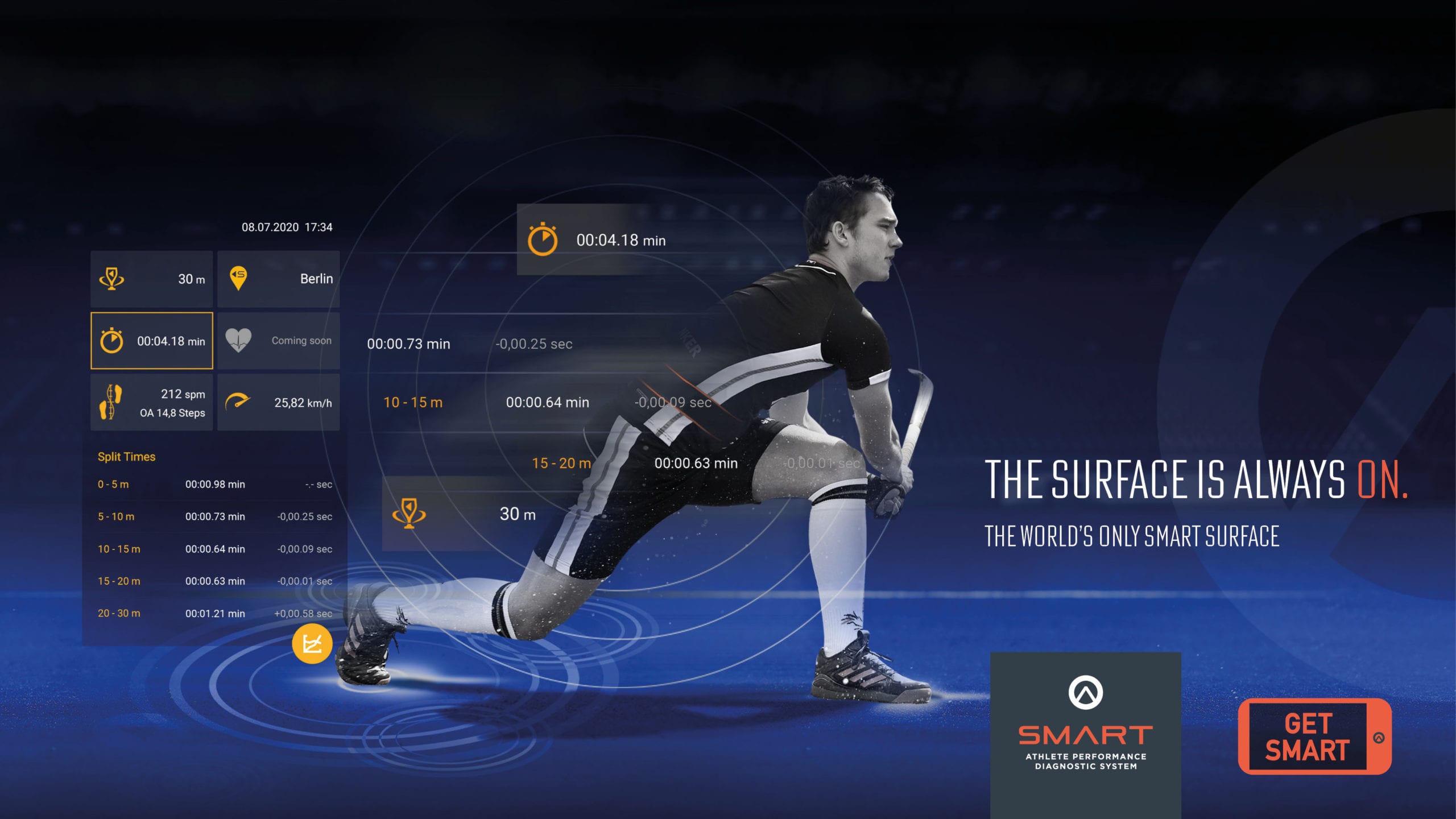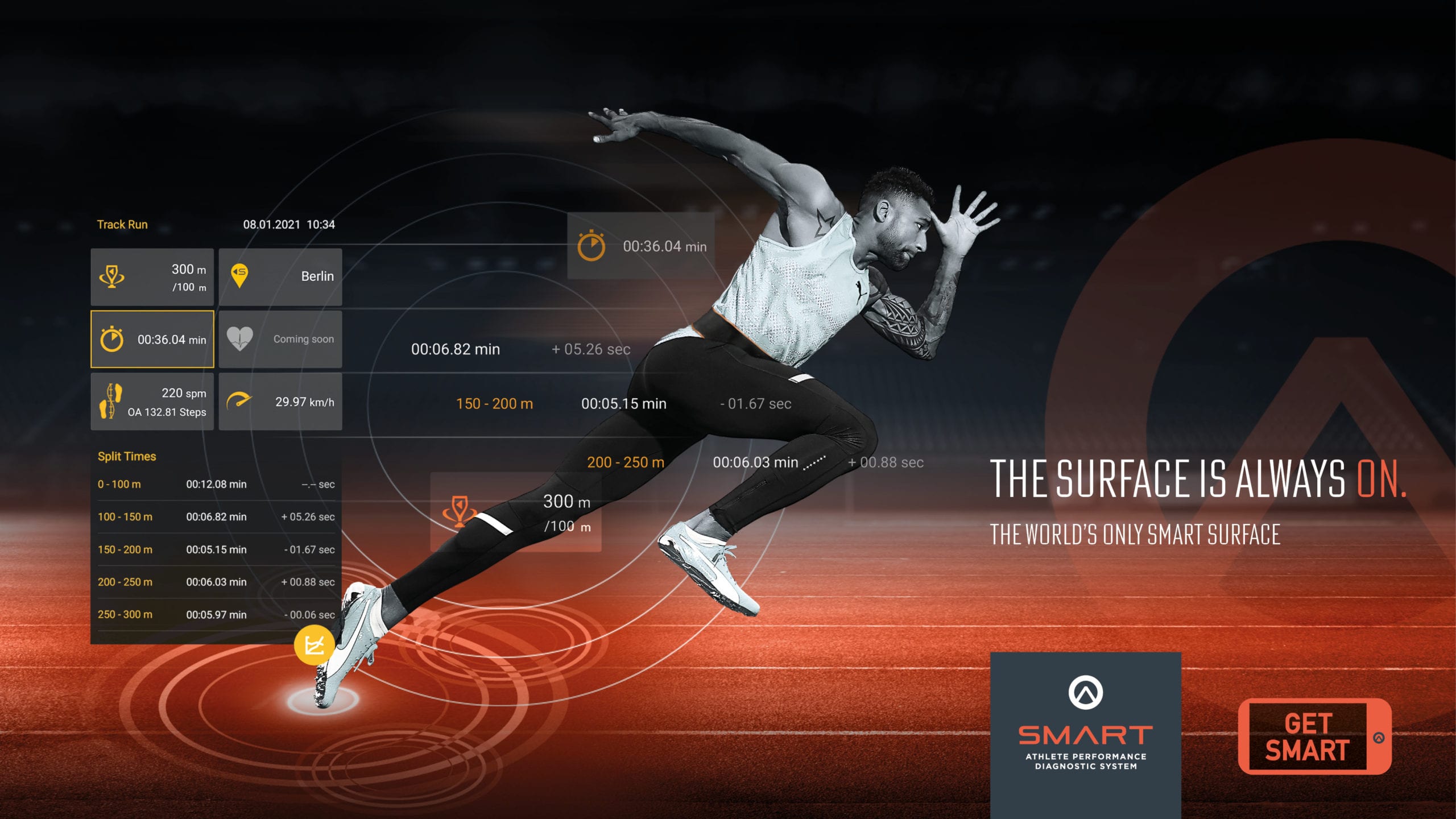You find them in schools and universities, in clubs, leisure facilities and public spaces: Brick-red tartan surface with colourful markings, two goals, basketball net and a high fence with wire mesh – outdoor all-weather pitches. Their shock-absorbing tartan surfaces have very good ball-bouncing properties, protect athletes from injuries, are non-slip and the water-permeable variants dry out quickly after a downpour. Depending on their size and equipment, the all-weather pitches can be used for multiple sports such as football, tennis, volleyball, hockey, handball and basketball, as well as high and long jump or gymnastics classes. We have summarised the most important criteria for the construction of a multifunctional all-weather pitch in a 10-point checklist for you.
Tip 1: Before constructing a tartan pitch, create a plan for its usage
Which sports do you want the all-weather or tartan pitch to be suitable for? Who will be using it? Will the outdoor sports pitch be open to the public at some point, so do I need to protect it against vandalism? How often will it be maintained, and by whom? All these and other questions should be agreed in advance so that you can choose the best floor covering and the right equipment. Because not every type of synthetic floor is suitable for every type of sport and intensity of use. Experts can help you in answering these questions, as well as in complying with legal regulations and calculating the costs of constructing the sports ground. These include, for example, specialist planners of sport facilities or landscape architects specialising in sports ground construction. They also know the size of such a sports ground, including markings.
Tip 2: Useful to know – standard sizes and markings
There are three standard sizes (in Germany) for all-weather pitches that can be extended to include high and long jump sites.
- The 20 x 28 m playing field is the smallest version, suitable for two volleyball courts (18 x 9 m each, blue markings) or one basketball court (26 x 14 m, yellow markings).
- With a medium size area of 26 x 44 m, you can fit three volleyball courts (18 x 9 m each, blue markings), two basketball courts (28 x 14 m each, yellow markings) or one large handball court (40 x 20 m, orange markings) in this size of all-weather pitch.
- 28 x 44 m is the size of a large all-weather pitch on which tennis, handball, basketball and volleyball (23.77 x 10.97 m, white markings) can be played, or with which a large 40 x 26 multi-purpose pitch area is available.
In relation to the dimensions of the basketball courts, it should be noted that this is the size of a school court – in the professional leagues, the size is 28 x 15 m. In addition, it is assumed that the basketball stand will be 2.25 m high.
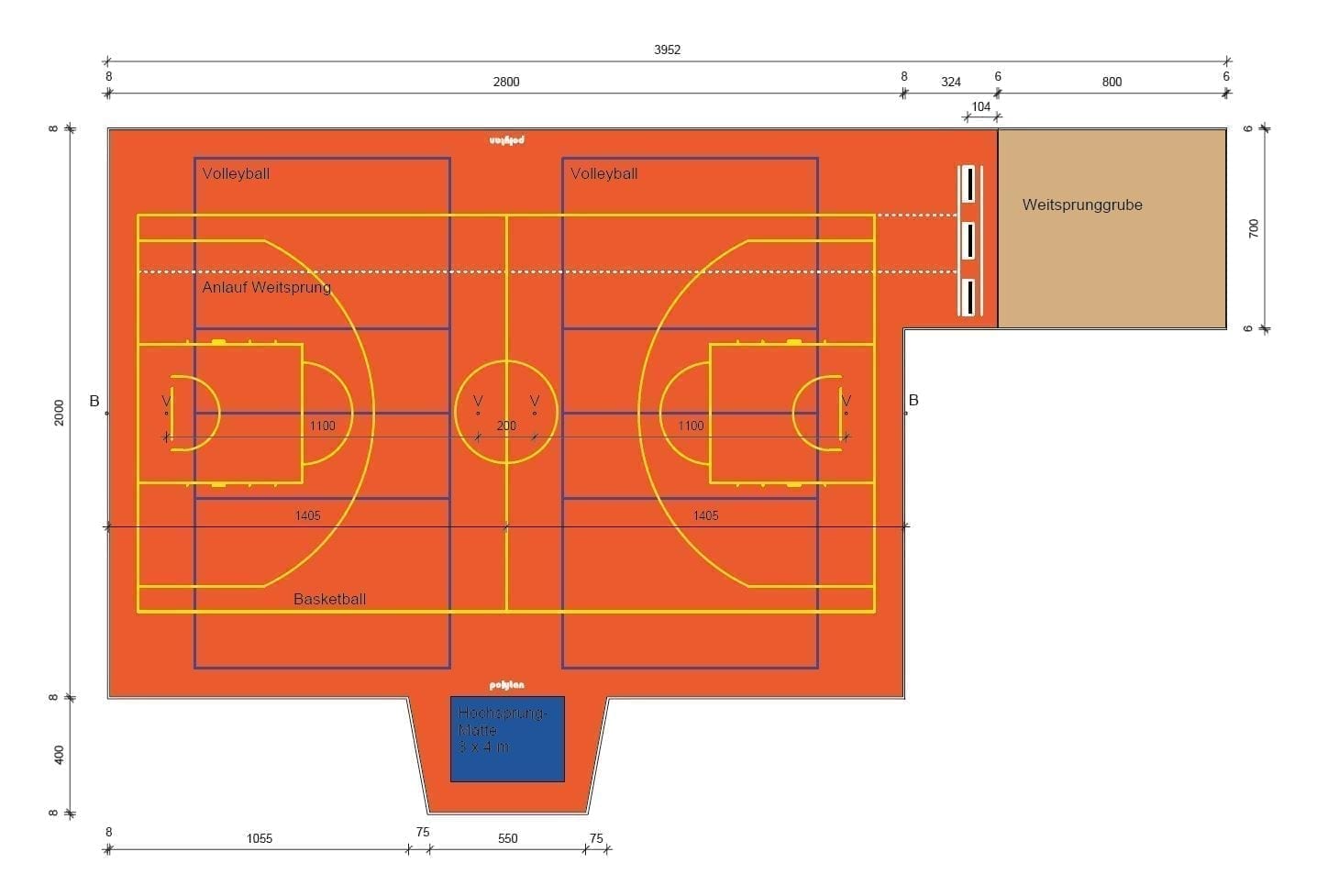
Tip 3: What you need to know about sports ground construction
The requirements for the design, construction or use of synthetic flooring on sports grounds are defined in Germany in DIN EN 14877:2013-12 “Synthetic surfaces for outdoor sports areas – specification” and DIN 18035-6:2014-12 “Sports ground – Part 6: Synthetic surfaces”. Regulations and requirements may vary for other countries.
According to DIN 18035-6: 2014-12, the synthetic surface in sports facilities consists of a permanently installed, water-permeable or waterproof structure, which comprises the synthetic covering, an asphalt layer, a base layer without bonding agent and a stable subsoil. In tip 6, we explain whether you need a water-permeable or waterproof construction for your tartan area. First, we would like to give you some tips on choosing a suitable subsurface.
Tip 4: The ideal subsurface for rainwater drainage
Beneath the tartan surface there is usually the bonded base layer – an asphalt layer consisting of aggregate, filler and bitumen. It is 65 to 100 mm thick and is prepared as one or two layers. Beneath this is a base layer without binding agent. This is 200 mm thick and is also laid as either one or two layers and consists of natural aggregates. The final layer is a stable, level subsoil. This substructure with drainage absorbs seepage water and, in combination with a drainage system, drains it towards a run-off area. Depending on whether the construction is to be water-permeable or waterproof, the asphalt base layer with bonding agent and the base layer without bonding agent must also be constructed this same way.
Tip 5: The right choice: Seamless installation on site
Synthetic sports surfaces are available that comply with DIN EN 14877: 2013-12 and DIN 18035-6: 2014-12 for tartan tracks and all-weather pitches either as prefabricated sheets or strips or as products installed on-site.
At Polytan, we recommend on-site installation, for both tartan tracks and all-weather pitches, because these on-site constructions guarantee a seamless, completely flat surface. Where you use strip products, for example, the joints can rise over the years and become a stumbling block for athletes.
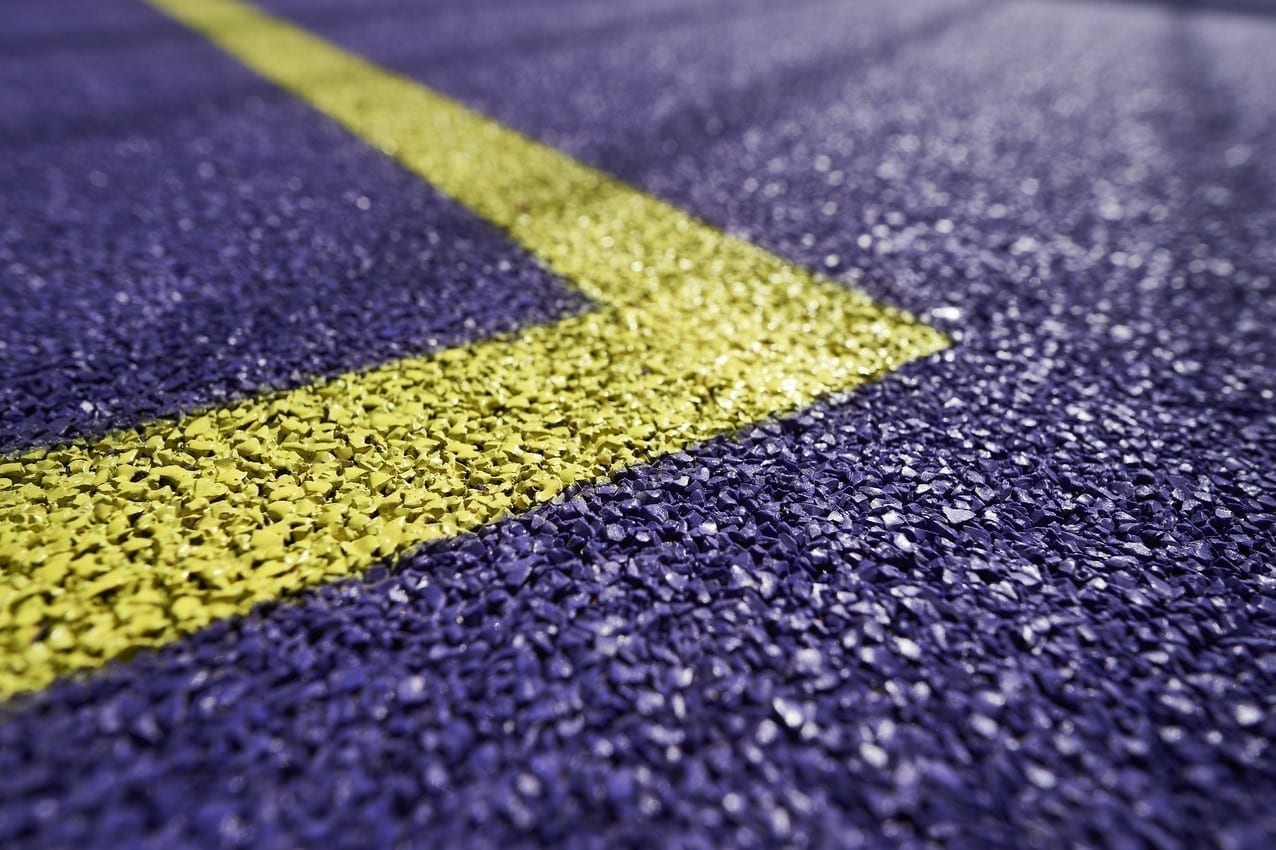
Tip 6: Water-permeable or waterproof?
As a rule of thumb, you can say that: water-permeable sports surfaces are the right choice for sports facilities for leisure and school sports and for multi-purpose sports grounds. Waterproof synthetic coverings are mainly used for tartan tracks in professional sports and at international competitions. The synthetic surfaces are categorised in Germany under DIN 18035-6 into surface types A to E. Surface types A, B and C are water-permeable, while D and E are waterproof. But which type of surface do we recommend for multi-purpose pitches?
Tip 7: The right sports surface for multi-functional pitches
For outdoor all-weather pitches where various different sports are played, Polytan has developed the water-permeable, twin-layer PolyPlay S which is a surface type B under DIN EN 1477. This sports surface is a durable all-rounder, which has very good ball bouncing properties due to its smooth surface. Despite its smoothness, the flat top layer is non-slip and dries quickly. Its single-layer counterpart with the same product properties is Polytan’s PolyPlay SE, which unlike the PolyPlay S has no base layer.
Tip 8: optimal sports ground maintenance is needed for a long lifespan
To achieve the longest possible durability, all-weather pitches and tartan tracks require regular and professional maintenance of the sports surface. When it comes to the synthetic surface, this consists of four maintenance activities:
- Regular inspection
- Basic cleaning
- Intensive cleaning using special cleaning machines
- Rapid repair or renovation.
If you take good care of it, the lifespan of a properly installed tartan surface with a spray coating is around eight years; full polyurethane/sandwich coatings in the system structure can achieve a service life of up to 30 years. As a full-service supplier for the construction of sports facilities and as an RAL-certified maintenance company, we at Polytan can provide trained service teams and specialist machines which enable efficient cleaning, maintenance and repair of tartan surfaces. There are three different service care plans available for new installations. Regular intensive maintenance carried out by professionals means your warranty remains valid.
Tip 9: New surface or new pitch?
Sunlight, frost and heat along with wear and tear take their toll on a synthetic surface over the years. However, the base layers are better protected against ageing and can serve much longer – assuming they have been installed properly. We will often recommend re-topping for sports facilities in need of renovation. This involves a applying a new synthetic surface over the cleaned and tidied up old tartan track. This not only provides a quick way for the all-weather pitch to regain its functional status for sports, but also makes it look really smart again – for example, with new colours and fresh markings.
Tip 10: Cinder and hard pitches – an affordable alternative to a tartan pitch?
For those who find the sports surface construction costs to build a sports field with a modern tartan surface just too high, an alternative option is a cinder or clay or hard court, all of which were common before the development of modern synthetic floor coverings. These consist of an unbound, mineral granule mixture, but they are very hard and become dusty in dry conditions. There is also an increased risk of injury for athletes, since a cinder pitch provides no shock absorption. We at Polytan only recommend a cinder or hard court where ongoing court maintenance is impossible. By the way, by “hard court”, in this context we do not mean the concrete tennis courts, where even top-class international tennis tournaments such as the US Open are held.
Conclusion: construction of an outdoor sports ground
All-weather pitches with a synthetic surface are the ideal solution for outdoor leisure and school sports, as they can be used for many types of sport. Thanks to their sport-related functional properties they support the athlete’s musculoskeletal system and reduce the risk of injury when falls occur. These surfaces are resistant to weathering and rotting and retain their non-slip properties even under wet conditions. Because the water-permeable surfaces dry quickly, interruptions to play due to summer thunderstorms only last a short time. In general, sports grounds with a tartan surface can be used in any weather – except for ice and snow. Their reliable usability does also depend on proper sports ground maintenance – manufacturers like Polytan can actively support this through various service cover plans.
